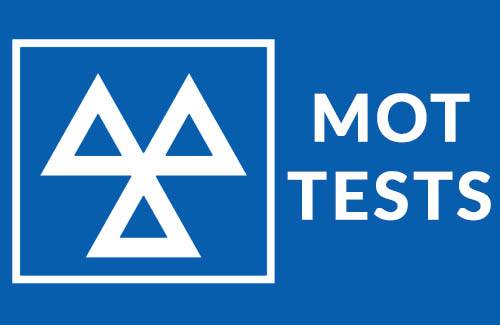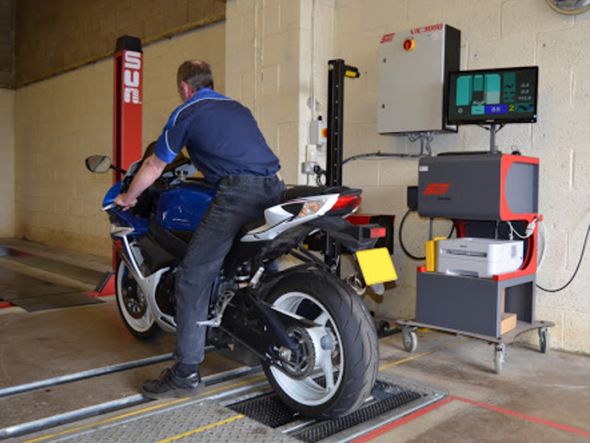The MOT test (or simply MOT) is an annual test of vehicle safety, roadworthiness aspects and exhaust emissions required in the United Kingdom for most vehicles over three years old.

Your MOT might not be the most exciting part of bike ownership, but it’s one you can’t ignore. If your motorbike is more than three years old, a valid MOT is a legal must-have.
If you skip it, you could risk fines, invalid insurance, and even having your bike taken off the road. To help you stay road-legal, we’ll break down what’s checked during a motorbike MOT, how to prepare, and how to keep your bike safe.

Which motorbikes require an MOT?
If your motorbike is more than three years old, it legally needs an MOT every year. This applies to all types of bikes, whether it’s a 125cc commuter, an adventure-ready touring bike, or a sporty superbike.
There are only a few exceptions:
- Brand-new bikes are MOT-exempt for the first three years.
- Off-road-only bikes (not registered for road use) don’t require an MOT.
- Classic motorcycles over 40 years old may be MOT-exempt, but only if they haven’t been “substantially changed” in terms of engine, frame or suspension.
What is checked during a motorbike MOT?
During your MOT, a qualified tester will go through a thorough safety inspection of essential components to ensure your bike is roadworthy and legally compliant with GOV.UK motorcycle MOT regulations.
Here’s an MOT checklist for your motorbike:
- Brakes
- Brake pads, discs/drums, levers/pedals: Inspected for wear and secure movement.
- Brake performance: Tested for stopping efficiency.
- Brake fluid/hydraulics: Checked for leaks or damage.
- Lights and electrics
- Headlights, tail lights, indicators, and reflectors: Must work, be correctly aimed, securely attached, and the right colour.
- Horn: Must function with a clear tone.
- Steering and suspension
- Handlebars, forks, head bearings: Tested for use, damage, and correct alignment.
- Shocks and suspension: Examined for leaks, damping performance, and tight mounts.
- Wheels and tyres
- Tyre condition and tread depth: Minimum 1 mm tread, free of cracks or bulges.
- Wheel bearings and alignment: Wheels must rotate smoothly and stay aligned.
- Frame and structure
- Frame: Checked for cracks, corrosion, distortion, and integrity.
- Exhaust and emissions
- Exhaust system: Must be intact, secure, quiet, and appropriately stamped for road use (BSAU 193 if required).
- Leaks and noise levels: Monitored for safety and environmental compliance.
- Fuel system: Tanks, hoses, and cap must be leak-free, secure, and fully functional.
- Rider controls and accessories
- Throttle and clutch levers: Smooth operation, full return, no excessive slack or damage.
- Accessories: Footrests, seat, drive chain, and sprocket must be secure, functional, and tensioned correctly.
- Registration and ID
- Plates and VIN/frame numbers: Must be present, legible, and fitted correctly.
- Sidecar (if fitted)
- Sidecar: Checked for secure mounting, suspension, wheel bearings, alignment, lights, and tyres.
What happens if your motorbike fails the MOT?
If your motorbike fails its MOT, you’ll be issued a VT30 certificate explaining why. There are two types of failure:
- Major fail: Your bike doesn’t meet safety standards and must be repaired before it’s road legal.
- Dangerous fail: The bike poses a serious risk and can’t be ridden at all, not even to a garage.
You can only ride after a failure if your current MOT is still valid and the failure wasn’t classed as dangerous. Otherwise, it’s illegal and could lead to penalties.
If you get the repairs done at the same garage, you usually qualify for a free or reduced-price retest, as long as it’s within 10 working days. If you go to a different test centre or miss the window for repairs, you’ll have to pay the full MOT fee again.
If you think your bike was failed unfairly, you can appeal the result. Ask the test centre for a VT17 form and submit it within 14 days.
Common questions about motorbike MOTs
Can I ride without an MOT?
No, riding without a valid MOT is illegal (unless you’re heading to a pre-booked MOT test). If you’re caught, you could face fines, penalty points, and your insurance may be void.
How long does a motorbike MOT take?
On average, a motorbike MOT takes around 45 minutes to an hour. Most garages allow you to drop your bike off and collect it later the same day.
Is insurance valid without an MOT?
In most cases, no. If your bike doesn’t have a valid MOT, your insurance could be invalid in the event of a claim, especially if the bike is considered unroadworthy.
How much does a motorbike MOT cost?
As of June 2025, the maximum MOT fee for a standard motorcycle is £29.65. If your bike has a sidecar, the fee goes up to £37.80. Some garages may charge less, but can’t legally charge more.
Please note this page was correct when written in August 2025.
